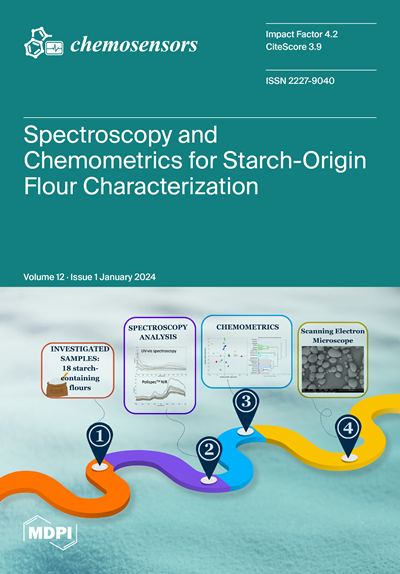人肠道癌细胞鼠伤寒沙门菌感染的体外阻抗检测
IF 3.7
3区 工程技术
Q2 CHEMISTRY, ANALYTICAL
引用次数: 0
摘要
关于基于哺乳动物细胞的关键食品安全病原体生物传感器相关检测的大量研究论文已被报道。在本研究中,通过比较频率记录和阻抗谱测量的变化,监测了五种不同细菌MOI作用于人结肠癌细胞系Caco-2和粘液分泌细胞HT29-MTX-E12后30min鼠伤寒沙门菌感染的进展情况。为此,最初进行了细菌粘附和侵袭试验。然后,将阻抗谱记录的数据与MTT摄取细胞增殖试验获得的细胞活力数据以及线粒体膜电位改变的活细胞分析结果进行比较。从我们的研究结果来看,在两种细胞系感染的多重性(MOI)较高的情况下,侵染细胞中细菌菌落的浓度依赖性增加。相反,细菌感染在处理1 h后对细胞的活力没有任何影响。两种细胞系的线粒体电位测量结果不同。最后,从2D和3D培养中记录的阻抗值对两种细胞系都是浓度依赖的,而每个细胞系都有一个特定的特征模式。我们的研究结果表明,在不久的将来,基于人类细胞的生物电分析可以成为一种有价值的工具,用于获得每种细菌感染的独特指纹。本文章由计算机程序翻译,如有差异,请以英文原文为准。
Impedance In Vitro Assessment for the Detection of Salmonella typhimurium Infection in Intestinal Human Cancer Cells
A significant number of research papers regarding biosensor-related assays for key food safety pathogens based on the use of mammalian cells has been reported. In this study, the Salmonella typhimurium infection progression was monitored in the human colon cancer cell line Caco-2 and the mucus-secreting HT29-MTX-E12, after treatment with five different bacterial MOI for 30 min by comparing the alterations of frequencies recordings with impedance spectroscopy measurements. For this purpose, bacterial adhesion and invasion assays were initially performed. Then, the data obtained from impedance spectroscopy recordings were compared to cell viability data derived from the MTT uptake cell proliferation assay as well as from live cell analysis assays of mitochondrial membrane potential alterations. From our findings a concentration-dependent increase in bacterial colonies occurring from invaded cells was observed upon a higher multiplicity of infection (MOI) bacterial infection at both cell lines. On the contrary, the bacteria infection did not have any impact on the viability of the cells after 1 h of treatment. Differential results were obtained from the measurement of mitochondrial potential at both cell lines. Finally, the impedance values recorded from the 2D, and 3D cultures were concentration-dependent for both cell lines whereas a characteristic pattern specific to each cell line was revealed. Our results indicate that human cell-based bio-electric assays can be a valuable tool for obtaining a unique fingerprint for each bacterial infection in the near future.
求助全文
通过发布文献求助,成功后即可免费获取论文全文。
去求助
来源期刊

Chemosensors
Chemistry-Analytical Chemistry
CiteScore
5.00
自引率
9.50%
发文量
450
审稿时长
11 weeks
期刊介绍:
Chemosensors (ISSN 2227-9040; CODEN: CHEMO9) is an international, scientific, open access journal on the science and technology of chemical sensors published quarterly online by MDPI.The journal is indexed in Scopus, SCIE (Web of Science), CAPlus / SciFinder, Inspec, Engineering Village and other databases.
 求助内容:
求助内容: 应助结果提醒方式:
应助结果提醒方式:


